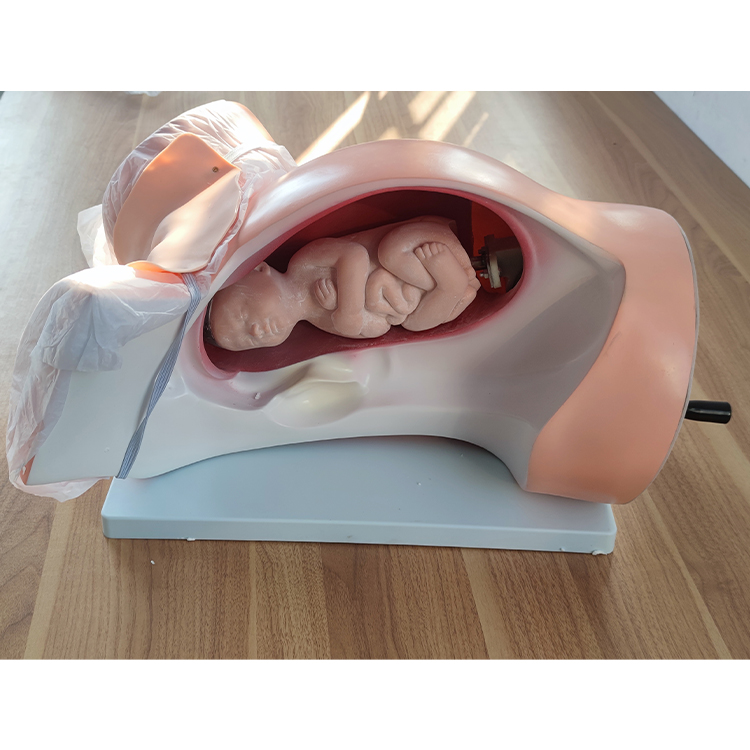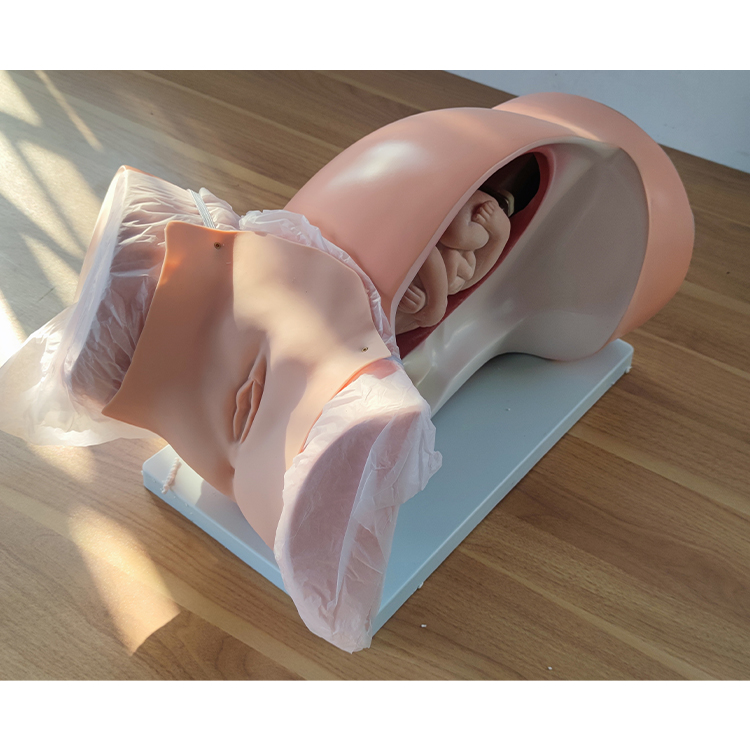This is the birthing machine model. When used, the mechanical transmission structure can simulate the birth process of the fetus in the maternal birth canal. Mainly used in the field of medical education, it is an important teaching aid for the teaching of obstetrics and gynecology, which can allow medical students to intuitively understand the mechanism of childbirth and be familiar with a series of movement changes when the fetus passes through the birth canal, helping to improve midwifery operation skills and clinical practice ability.
Teaching training case
Basic delivery mechanism teaching: In the teaching of obstetrics and gynecology in a medical college, teachers used the delivery machine model to show medical students a series of movements such as connection, descent, flexion, internal rotation, extension, reduction, external rotation, and shoulder delivery during occipito-anterior fetal delivery. By rotating the mechanical device on the model to simulate the movement of the fetus in the maternal birth canal, students can intuitively see the relationship between the fetus and the maternal pelvis in each step, deepen the understanding of the theoretical knowledge of normal birth machine rotation, improve the spatial imagination ability, and lay the foundation for subsequent clinical practice.
Teaching of abnormal fetal position: For breech delivery, a common abnormal fetal position, the teacher adjusted the fetal position to breech with the help of the model, demonstrating the problems such as umbilical cord prolapse, fetal arm lifting up, and backward head difficulty that are prone to occur during breech delivery. Students operate the model in groups to practice breech midwifery techniques, such as how midwives use their palms to hold the outward moving fetal hips during labor, control the rhythm of labor, until the uterine opening is completely open and the vagina is fully dilated, and then assist the fetus to deliver, so as to improve students’ ability to cope with difficult labor situations.
Clinical skills assessment cases
Assessment of new midwives in hospitals: When a top-three hospital conducts skill assessment of new midwives, it uses the delivery machine model to set up a variety of delivery scenarios, including normal delivery, cephalic dystocia (such as persistent occipito-posterior), breech delivery, etc. In the assessment process, observe whether midwives can accurately judge fetal position and labor progress, whether they are skilled in using midwifery techniques, such as whether they can correctly guide the mother to force and perform lateral perineal incision in cephalic dystocia, and whether they can properly handle key aspects such as the delivery of the fetal hip and shoulder during breech delivery, and evaluate the professional skills of midwives according to their performance. Help them identify deficiencies and improve them accordingly.
Completion assessment of standardized training for resident doctors: In the completion assessment of standardized training for resident doctors in obstetrics and gynecology, the delivery machine transfer model is used as an important assessment tool to simulate real delivery emergencies, such as abnormal fetal heart and weak maternal contractions during delivery. Residents are required to make correct diagnosis and treatment decisions, such as choosing the right midwifery method and deciding whether caesarean section is needed, by operating the model and comprehensively applying the knowledge and skills they have learned within the specified time, so as to test the residents’ mastery of the knowledge and skills related to childbirth and their clinical response ability.
Post time: Apr-02-2025



